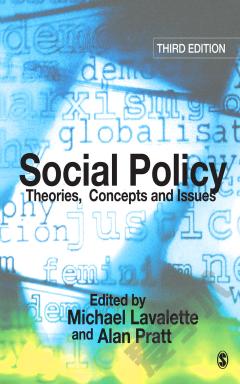Understanding Social Networks —— Theories, Concepts, and Findings
----- 解读社会网络:理论,概念和发现
Preface 1) Introduction -Getting Connected -Networks as Information Maps -Leaders and Followers -Networks as Conduits -The Point of View 2) Basic Network Concepts, Part I: Individual Members of Networks -Introduction -What Is a Network? -Sociological Questions about Relationships Connections Propinquity Homophily Individual-Level Homophily Homophily and Collectivities -Dyads and Mutuality -Balance and Triads -Where We Are Now 3) Basic Network Concepts, Part II: Whole Social Networks -Distributions Dyads and Triads Density Structural Holes Weak Ties -"Popularity" or Centrality -Distance Size of the Interpersonal Environment The "Small World" -Multiplexity -Roles and Positions Named Positions and Relationships Informal Positions and Relationships Informal Relations and Hierarchies Embeddedness of the Informal within Instituted or Named Networks Observed Roles -Summary 4) Basic Network Concepts, Part III: Network Segmentation -Introduction -Named and Unnamed Network Segments Primary Groups, Cliques, and Clusters -Segmenting Networks from the Point of View of the Observer Segmenting Groups on the Basis of Cohesion Resistance to Disruption Structural Similarity and Structural Equivalence Core/Periphery Structures -Where We Are Now 5) The Psychological Foundations of Social Networks -Getting Things Done -Community and Support -Safety and Affiliation -Effectiveness and Structural Holes -Safety and Social Networks -Effectiveness and Social Networks -Both Safety and Effectiveness? -Driving for Status or Rank -Cultural Differences in Safety, Effectance, and Rank -Motivations and Practical Networks -Motivations of Corporate Actors -Cognitive Limits on Individual Networks -Where We Are Now 6) Small Groups, Leadership, and Social Networks: The Basic Building Blocks -Introduction -Primary Groups and Informal Systems: Propositions -Pure Informal Systems -How to Find Informal Systems -Asymmetric Ties and the Influence of the External System -Formalizing the System -Where We Are Now 7) Organizations and Networks -The Contradictions of Authority -Emergent Networks in Organizations The Factory Floor -Information-Driven Organizations -Inside the Box, Outside the Box, or Both -Bridging the Gaps: Tradeoff s between Network Size, Diversity, and Social Cohesion -Where We Are Now 8) The Small World, Circles, and Communities -Introduction -How Many People Do You Know? -The Skewed Distribution of the Number of People One Knows -Formal Small World Models -Clustering in Social Networks -Social Circles -The Small World Search -Applications of Small World Theory to Smaller Worlds -Where We Are Now 9) Networks and Diffusion -Networks and Diffusion-An Introduction The Basic Model Exogenous Factors in the Adoption of Innovation - Influence and Decision-Making The Current State of Personal Influence Self-Designated Opinion Leaders or Influentials Characteristics of Opinion Leaders and Influentials Group Influence -Epidemiology and Network Diffusion Social Networks and Epidemiology Social Networks and HIV-AIDS Transporting Disease-Large-Scale Models -Tipping Points and Thresholds Threshold - Where We Are Now 10) Networks as Social Capital - Introduction The General Idea of Social Capital Social Capital as Investment -Individual-Level Social Capital Social Support Individual Networked Resources: Position and Resource Generators Correlates of Individual Social Capital Other Indicators of Networked Resources -Social Capital as an Attribute of Social Systems Theorists of Social System Social Capital Bowling Alone Recent Findings on Social System Social Capital and Its Consequences -Where We Are Now 11) Ethical Dilemmas of Network Research -Networks as a Research Paradigm -Anonymity, Confidentiality, Privacy, and Consent -Who Benefits - Cases and Examples Survey Research Organization Research Terrorists and Criminals Networks and Terrorism: The CASOS Projects -Conclusion: More Complicated than the Belmont Report 12) Coda: Ten Master Ideas of Social Networks -Introduction -The Ten Master Ideas Bibliography Notes Index
{{comment.content}}








 京公网安备 11010802027623号
京公网安备 11010802027623号